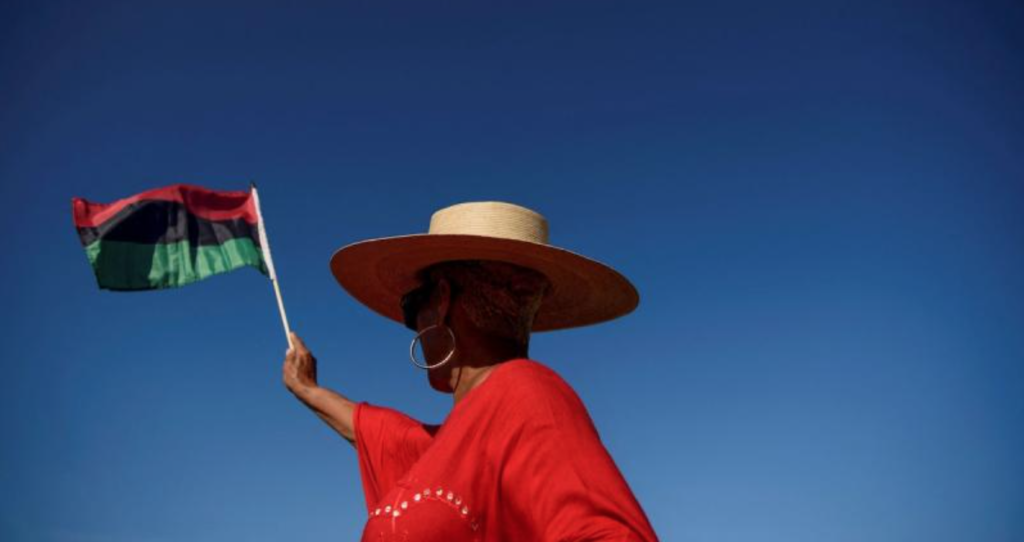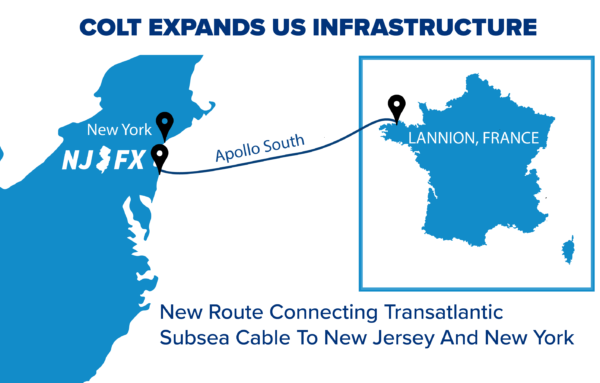
Bloomberg TV: Undersea Cables at NJFX
Red Sea conflict threatens Key Internet Cables. Maritime attacks complicate repairs on underwater cables that carry the world’s web traffic.
Observed on June 19, the nation’s newest federal holiday commemorates the end of slavery in Texas. Here’s how it came to be celebrated nationwide.

Juneteenth is known to some in the United States as the country’s “second Independence Day.” Observed each year on June 19, the holiday marks the end of slavery in Texas at the end of the Civil War.
For more than 150 years, African American communities across the country have observed this holiday—from social gatherings in Emancipation Parks to church services and other events. But Juneteenth has increasingly been celebrated nationwide; in 2021 it became the first new federal holiday since the establishment of Martin Luther King Jr. Day in 1983. How did that happen? Here’s a look at the history of Juneteenth.
At the stroke of midnight on January 1, 1863, the Emancipation Proclamation came into effect and declared enslaved people in the Confederacy free—on the condition that the Union won the war. The proclamation turned the war into a fight for freedom and by the end of the war 200,000 Black soldiers had joined the fight, spreading news of freedom as they fought their way through the South.
Since Texas was one of the last strongholds of the South, emancipation would be a long-time coming for enslaved people in the state. Even after the last battle of the Civil War was fought in 1865—a full two years after the Emancipation Proclamation was signed—it is believed that many enslaved people still did not know they were free. As the story goes, some 250,000 enslaved people only learned of their freedom after Union General Gordon Granger arrived in Galveston, Texas, on June 19, 1865, and announced that the president had issued a proclamation freeing them.
On that day, Granger declared, “The people of Texas are informed that, in accordance with a proclamation from the Executive of the United States, all slaves are free. This involves an absolute equality of personal rights and rights of property between former masters and slaves, and the connection heretofore existing between them becomes that between employer and hired labor.”
How is Juneteenth celebrated?
With Granger’s announcement, June 19—which would eventually come to be known as Juneteenth—became a day to celebrate the end of slavery in Texas. As newly freed Texans began moving to neighboring states, Juneteenth celebrations spread across the South and beyond.
Early Juneteenth celebrations included church services, public readings of the Emancipation Proclamation, and social events like rodeos and dances.
For decades, many southern Black communities were forced to celebrate Juneteenth on the outskirts of town due to racism and Jim Crow laws. To ensure they had a safe place to gather, Juneteenth groups would often collectively purchase plots of land in the city on which to celebrate. These parks were commonly named Emancipation Parks, many of which still exist today.
As the civil rights movement gained momentum in the 1960s, Juneteenth celebrations faded. In recent years, however, Juneteenth has regained popularity and is often celebrated with food and community. It also has helped raise awareness about ongoing issues facing the African-American community, including a political fight for reparations, or compensation, to the descendants of victims of slavery.
How did Juneteenth become a federal holiday?
In 1980, Texas became the first state to recognize June 19 as a state holiday, which it did with legislation.
Juneteenth gained awareness in recent years as activists have pushed for state and federal recognition. Today, Juneteenth is recognized by nearly every state, and it is a public holiday in more than half of them, meaning that government offices are closed.
In 2021, efforts to gain federal recognition for Juneteenth finally came to fruition when U.S. President Joe Biden signed a bill into law that officially designates Juneteenth a U.S. federal holiday.
Juneteenth the same as Emancipation Day?
Despite the holiday’s resurgence in popularity, Juneteenth is often confused with Emancipation Day, which is annually celebrated on April 16.
Just as Juneteenth originally celebrated freedom in Texas, Emancipation Day specifically marks the day when President Lincoln freed some 3,000 enslaved people in Washington, D.C.—a full eight months before the Emancipation Proclamation and nearly three years before those in Texas would be freed.

Red Sea conflict threatens Key Internet Cables. Maritime attacks complicate repairs on underwater cables that carry the world’s web traffic.

Red Sea conflict threatens Key Internet Cables. Maritime attacks complicate repairs on underwater cables that carry the world’s web traffic.

Red Sea conflict threatens Key Internet Cables. Maritime attacks complicate repairs on underwater cables that carry the world’s web traffic.

Red Sea conflict threatens Key Internet Cables. Maritime attacks complicate repairs on underwater cables that carry the world’s web traffic.

Red Sea conflict threatens Key Internet Cables. Maritime attacks complicate repairs on underwater cables that carry the world’s web traffic.

Red Sea conflict threatens Key Internet Cables. Maritime attacks complicate repairs on underwater cables that carry the world’s web traffic.
